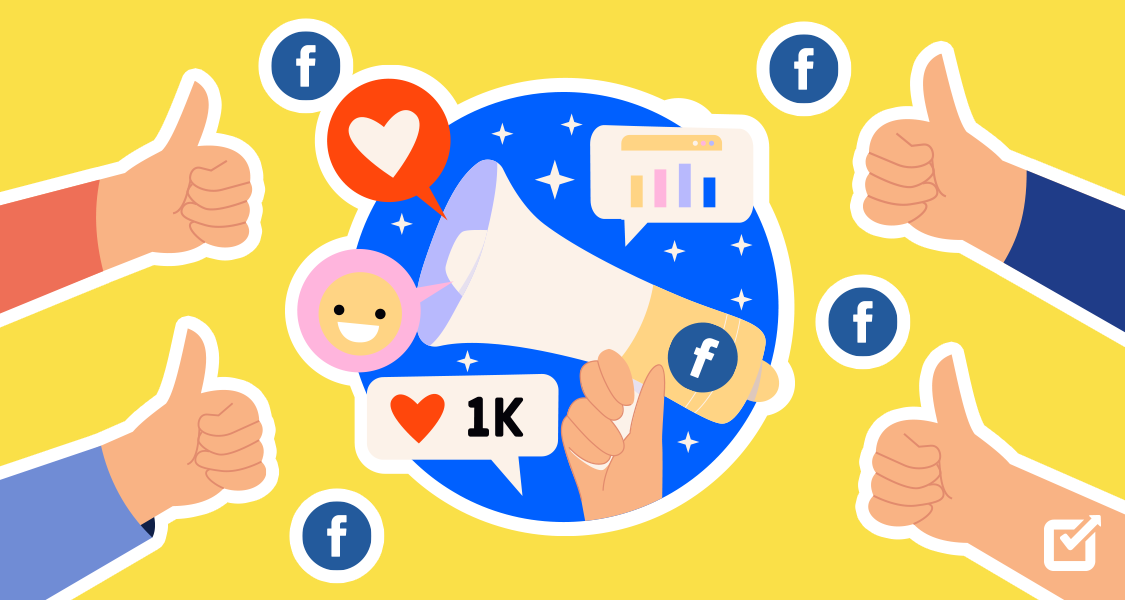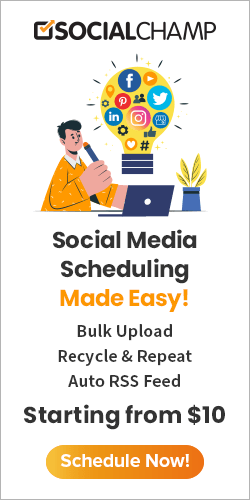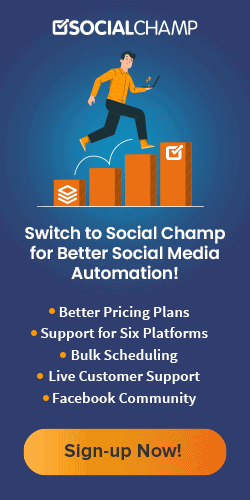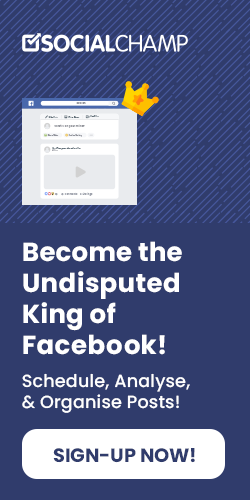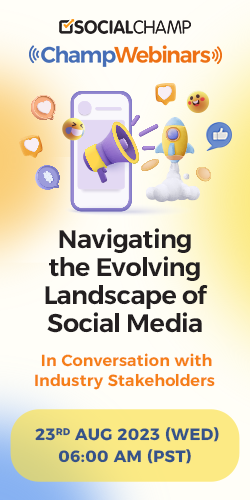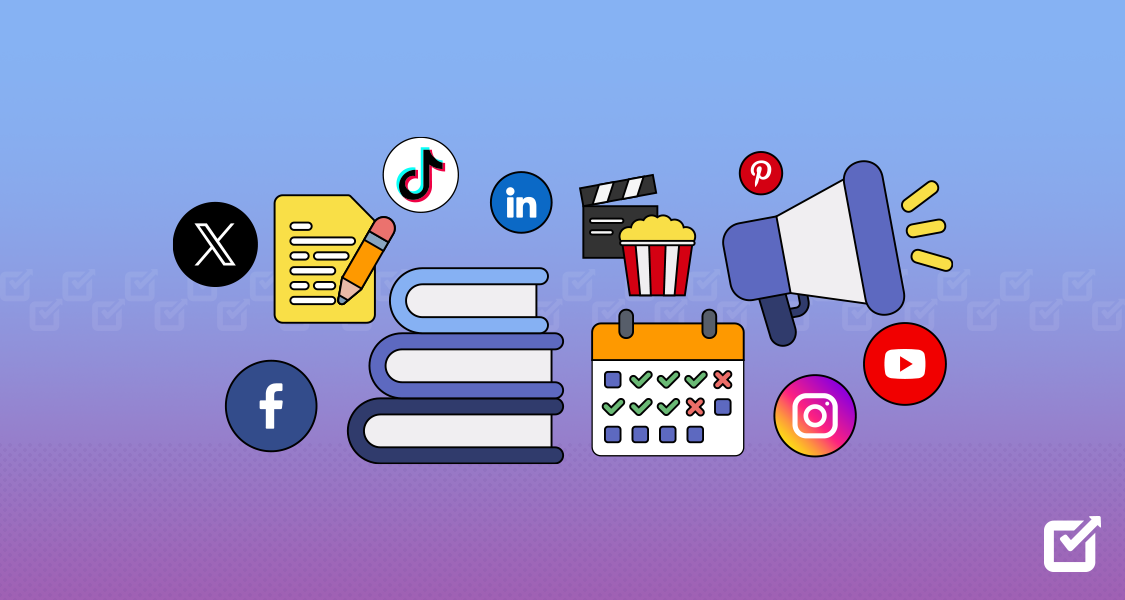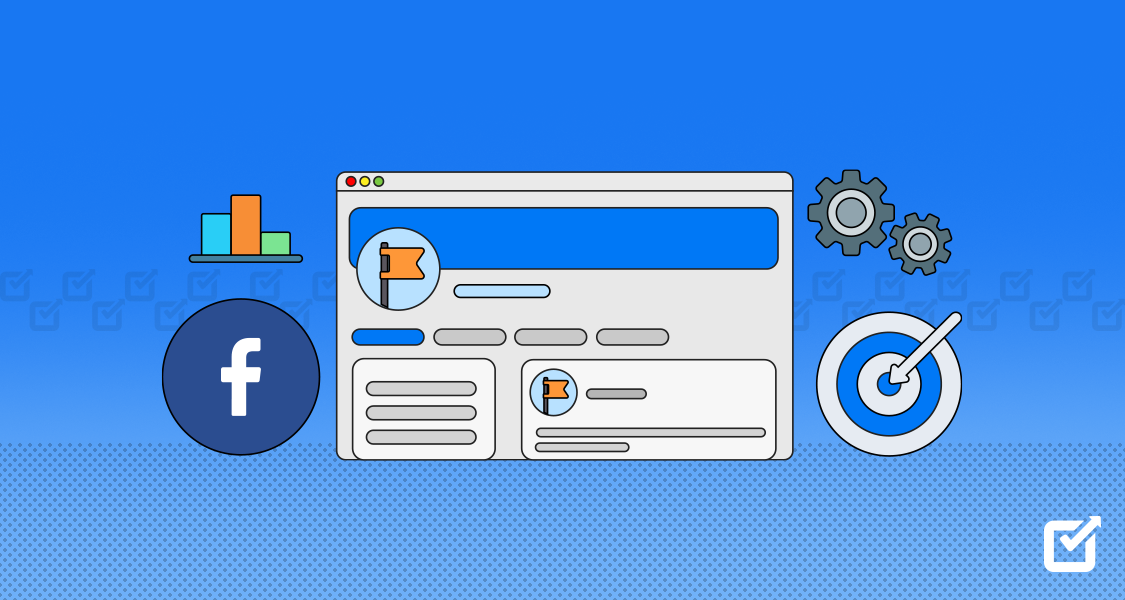More than 90% of marketers today use Facebook to market their products/services. According to Facebook’s research, as many as two-thirds of the users visit a local business page at least once a week.
All digital business owners agree that the competition is fierce. We’ve compiled some of the Facebook best practices for you to make the most of this platform in this blog. Let’s see what we’ve got.
Facebook Best Practices to Grow Your Audience
Growing your audience is not an overnight or a one-time thing; you have to work hard to earn the trust of potential customers and build the loyalty of your existing ones.
Accordingly, take a look at how you can build and nurture your community on the platform with these strategies.
Get Verified on Facebook
Request Facebook to verify your page. Having a blue checkmark or verified badge is powerful proof that your page is authentic. Users will feel safer interacting with the page, knowing that it is the official Facebook page of your business.
To get the verification, you must have a complete business profile and conform to the social network’s community guidelines.

It may be a long shot to have a verified page on Facebook, that’s why it’s considered one of the most challenging Facebook best practices. But the boost to your credibility makes it worth the try. Verified pages and profiles also rank first in Facebook’s search results, so that’s increased exposure for your business.
Make Use of the Actionable Insights
Facebook has tools that let you know how your page or the individual posts are faring. Page Insights, for example, offers information on the age, location, and gender of people interacting with your posts and clicking on your phone number and link to the website on the page.
There are also third-party applications for tracking your Facebook page metrics. Whichever tools you choose, the task is to make sense of the data and use it to create short-term and long-term marketing strategies.
For example, Insights show that you are not getting to your target audience. Also, you have more page likes or follows but not a correspondingly high engagement rate. Targeted ads and tailored content may be able to expand your reach so that you can connect with the right people.
Another example: the data reveals that most of your fans are on mobile devices. You then try publishing Facebook Instant Articles, which have quicker loading times and higher readership rates. This is based on the Liverpool Echo experiment that resulted in a 30 percent increase in reach, according to Facebook.
Advertise on Google and Facebook
While using Facebook ads is expected in this context, the addition of Google Ads can result in a broader reach. For all their differences, the two digital advertising solutions seem to agree on the importance of having a strong ad copy and considering user experience in advertising.
Facebook Ads Basics
- You use Facebook’s Ads Manager to create and manage ads. You can choose an objective (e.g., brand awareness, reach, and traffic) for every campaign.
- You have to declare if your ad is related to elections, politics, and social issues, among others, for ad transparency.
- You’ll get charged based on the ad’s link clicks or impressions.
- In addition to Facebook, your ads can appear on Instagram and Messenger.
Google Ads Basics- You need a Google Ads account to make and run campaigns. A critical element in your campaign is determining the keyword because it must match a user’s search term for the ad to show up on Google’s results.
- Keyword relevance and your bid influence the position of your ad. Your search ad campaign can focus on sales, leads, or website traffic.
- You’ll be charged based on the clicks (pay-per-click).
- Aside from Google’s search, you can have ads on YouTube and other Google’s properties.
You may have to employ several strategies before you start to see a return on your ad investment. Consider getting experts to help you with your Google Ad campaigns and achieve the results you have planned for your business. Each platform has its strengths, and imagine the impact when you advertise on two of the world’s biggest websites. Think about it.
Engage Through Content
Is your content resonating with your target audience? How are they responding? Use post insights to put out content that will encourage your readers to like, comment, and share.
Some people follow your business page for news and updates, especially on promos and sales. But you can also offer relatable content in the form of articles, videos, and photos. Instead of only promoting a product, give tips on how to use it and ask your followers to share theirs.
Consider your readers when creating content, which can span feel-good stories to something new or valuable they can share with people they know. Remember that you are not the only one whose updates they will see, so you have to leave a strong impression.
On a related note, all company-produced posts must reflect your branding. If your brand has a “personality,” what does it say, and how does it intend to convey it? This brand voice creates a distinct image in your readers’ minds. Whether you want to be snarky or funny, speak Gen Z or millennial, be consistent.
Be Present
Your Facebook presence carries a commitment to be available to respond to queries or messages during indicated business hours. Your efforts in handling private messages quickly and consistently can earn your page a “Very responsive to messages” badge.
Being on Facebook also means keeping your community updated. The best time to post is usually when most of your audience is active, an insight you can get from analytics tools. Another best time is when you want to monitor a post’s activity in real-time.
Don’t worry too much about posting because you can schedule your posts. You can create a Facebook content calendar plotting the time and date for evergreen blog posts and so on.
What is considered overposting? You may have to conduct a test to determine the number of posts that can irk readers that they unfollow you. Pending the results, stick to one or two posts a day.
Are You on the Same Page with Your Audience?
Being present on Facebook is just one step to grow your audience. That’s why you invest in content and ads, find ways to boost your credibility and make data-driven decisions.
Keep your customers and their best interests in mind in every marketing strategy you intend to carry out. This is one of the critical ingredients of business success.
Track Your Performance with Social Champ
Social Champ’s Analytics feature lets you monitor your performance on all of your Facebook pages. Compare the weekly or monthly results & download white-labeled reports in PDF
7 Facebook Best Practices for Page Posts
Posts on your Facebook page are usually the first impression of your business. Use these Facebook best practices to create an excellent first impression & reach your business goals through posts:
High-Quality Creatives
Don’t compromise on your post’s quality. Whether it’s an image, GIF, video, or infographic – use high-quality creative assets. People interact or react to posts that capture their attention. Don’t use blurry photos or videos. Or creatives that aren’t reflecting your brand voice. Follow the proper dimension of a Facebook post while designing & posting on Facebook.
Make it Actionable
To grab your audience’s attention to engage with your posts, try different social media marketing tactics to drive them to take the actions you want. For example,
- Share your website blogs.
- Ask them questions or their opinions in the comment section
- Arrange contests
- Try videos
- Do a live Q&A session
- Share curated content
- Post about the upcoming sale, create hype about it
- Share about your employees & work culture
Actionable posts can provide value that is directly related to your business goals. Not every post needs to be actionable, but try to add a few.
Pro-Tip: While boosting or running ads on Facebook, make sure you’re adding a CTA button to visit the website, sign up or book an appointment or more.
Know Your Audience
To increase the engagement of your post, you need to understand your audience the best. Try Page Insights for this. See where they’re from, what type of posts they’ve been interacting with, when are they online most. If you don’t have enough data for this, first try to post different posts. And then see which one is getting more engagement & what type of people are interacting. Ask yourself the following questions:
- Did the post include a CTA?
- Did you use any specific type of creatives?
- Did the post had a compelling message?
There’s no one-size-fits-all solution to capture your audience’s attention, but you can find what works for you by trying different tactics. Here are two different examples from two totally different brands that you can learn from.


Again, if you’re running ads, it’s essential to know your audience. You can target your audience based on age, location, interest, & job titles. Make sure you’re targeting the right message to the right audience. An ad for people in their 20s might not be relatable to the people in their 60s. Knowing your audience is the key to successful Facebook marketing.
Keep it Simple
One of the best Facebook marketing practices is to keep your page posts simple. Try a minimalistic approach. The lesser, the better. Try these:
- Try to convey your message in 4 to 6 words
- Use a neat & consistent color scheme
- Don’t use jargon words
- Don’t make your logo more visible than the message
Pin Important Posts
Pinned posts can be seen on the top of your Facebook page. If you have any major announcement or any essential post, pin it to the top of the page. It will keep your page visitors informed about the latest news or the upcoming event. Also, make sure that you keep your pinned posts up-to-date. Once the sale is over that you pinned, remove it to avoid any confusion.

Share your Posts
Some Facebook best practices require the efforts of other teams in your company as well. Your page & posts reach will always be an uphill battle if nobody is promoting it. Use your profiles & Facebook groups to increase visibility. Employee advocacy can also help you reach more people. Encourage your employees to share your Facebook page posts on their accounts.
Consistent Content Calendar
We’ve said this many times before. Consistency matters a lot on Facebook. It is considered one of the most discussed Facebook best practices. Post just a single post, but be consistent. You can’t just post randomly. Have a content calendar for your posting on Facebook. Use a Social media management tool if you find it hard to do manually. A social media tool can help you manage your Facebook page efficiently with minimum effort & time.
If you’re wondering how often should you post? The honest answer to this is, it depends on the resources you have. Find a frequency that makes sense for your brand.
Manage Your Facebook Pages Effortlessly
Social Champ’s All-In-One Calendar lets you manage all your posts in one place. You can schedule, view, edit, delete, repost all from one calendar.
Facebook Best Practices to Keep Track of Your Efforts & KPIs
To understand how to make the most of this Facebook business best practice, first, let’s understand the Key Performance Indicator, i.e., KPI.
A KPI shows how effectively a company is moving towards its business objectives. It’s a measurable value that is used to evaluate your success in achieving target goals. These are a few Facebook marketing best practices to keep track of the fact that your marketing efforts are aligned with the business goals:
- Brand Awareness KPIs
- Reach KPIs
- Traffic KPIs
- Engagement KPIs
- Conversion KPIs
Brand Awareness KPIs
You can ignore a few Facebook best practices if you’re already an established brand. If you’re a startup or in the initial branding stage, you need to measure these KPIs first. If your brand is already famous, like Nike, ZARA, or Gucci, you can skip this part. This part involves all the activities that create awareness of your brand within your target audience. The three key metrics that you need to track at this stage are:
- Brand Lift
- Brand Mentions
- Impressions
Reach KPIs
This is the part where your main objective is to get as many impressions as you can for the lowest cost. You need to reach a unique audience that can engage on your posts. It can be done organically or by Facebook ads. The key metrics at this stage are:
- Reach
- Frequency
- Unique Link Clicks
Traffic KPIs
The objective of this is to attract the audience that clicks on the button in your post or ad, which leads them to the website page you want them to visit. Key metrics that you should be measuring are:
- Link Clicks
- Click-Through-Rate (CTR)
- Quality Ranking
Engagement KPIs
When it comes to engagement, people mostly look forward to likes or reactions on the post. The engagement objective is to drive & track meaningful actions on Facebook. They don’t lead you to any web page, but the aim is to interact with the post. The key metrics that you should be following for this are:
- Page Likes
- Engagement Rate Ranking
- Post Shares
Conversion KPIs
This is the part that matters the most in Facebook best practices. The objective is to drive actions, especially when you’re running ads. These are the key metrics you should follow when your main focus is on website conversion, tracked by Facebook Pixel.
- Standard Events
- Custom Events
- Conversion Value
Standard events usually include start trial, purchase, complete registration, add to cart, initial checkout & more. Custom events include page views, time on page, file download link clicks, CTA clicks, & more.
Ready to Use These Facebook Best Practices?
Are you ready to use these Facebook business best practices on your next campaign? Do let us know what worked best for you.

